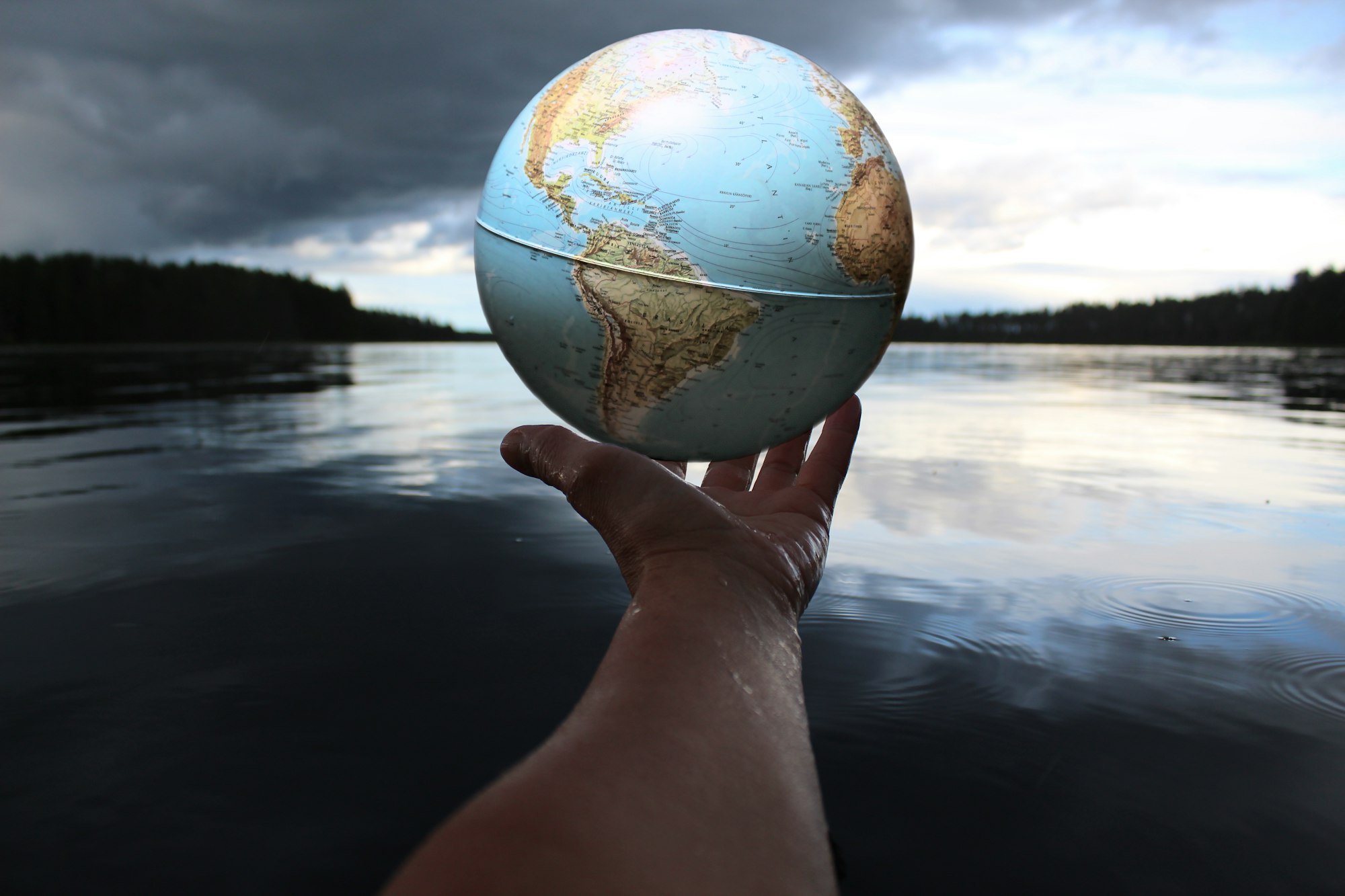Liminal Intelligence: Why Borderless Humans Are Prototypes for the 21st Century

Puedes leer la versión en español aquí.
AI is already "smarter" than us. It knows more, creates faster, and will outperform any silky-handed white-collar worker who thinks knowledge and speed are enough to guarantee relevance. Competing with algorithms on their own terms is a losing game.
So if humanity wants to survive this century, we need to cultivate an intelligence that algorithms can’t replicate — an intelligence born in the spaces between systems, cultures, and categories.
I call this Liminal Intelligence.
Liminality, as anthropologists like Arnold van Gennep and Victor Turner showed, is the “in-between” state during rituals of transition — neither one thing nor the other, but suspended between identities. In small-scale societies, people knew these states were temporary. There was always a way in and a way out, guided by ceremony masters.
But when whole civilizations enter liminal states — as philosopher Karl Jaspers described in his idea of the Axial Age — there is no guide. Civilizations collapse, certainty dissolves, and nobody knows what hell comes after. These moments are dangerous but also fertile. They destroy existing orders while making entirely new ones possible.
We are in such a moment now. AI is not just a new tool; it is a civilizational rupture. Like revolutions or societal collapses that have come before it, this is a liminal crisis: a collapse of order with no clear way out. There are no ceremony masters, religious gurus, or hallucinogenic plants (well, maybe?) that can lead us through because no human has lived through this before. That means the only way forward is to embrace liminality itself as a skill, a stance, a way of thinking.
Psychology has long known this at the individual level. Carl Jung described individuation — the deep process of self-becoming — as a kind of liminal journey: breaking down the persona, withdrawing from normal social modes, and enduring the dark phase until reintegration is possible. Liminality is not just disorientation. It is the crucible of transformation.
Today, in the age of AI, Liminal Intelligence may be humanity’s prototype for survival. Not intelligence measured by speed, accuracy, or recall, but the ability to live, think, and create in the uncertain spaces where structures have collapsed, where new meanings emerge, and where no algorithm can tell you what comes next.
Uh, Can I have a clearer definition, please?
Liminal Intelligence: the ability to thrive in ambiguity, navigate contradictions, and blend systems.
Liminal lives are lived in spaces where categories blur: a transitional space teetering between borders, where we navigate the cracks in systems, breathe between languages, and live a life in motion — a life unbound.
It’s an intelligence we can grow collectively as philosophers, scientists, artists, travellers, and anyone willing to explore unexpected spaces.
Engaging with Art, Performance, and Intellectual Exploration
While AI can generate images, compose music, and even write poetry, it cannot inhabit the sensory, emotional, and embodied experiences that define human creativity. Art, performance, and intellectual exploration rooted in the physical world offer encounters that AI cannot replicate.
Immersive Museum Exhibitions
Exhibitions like Liminal at Pérez Art Museum Miami Pérez Art Museum Miami and Liminal Spaces by Rose-Lynn Fisher Fowler Museum at UCLA invite audiences into spaces where identity, memory, and environment are constantly redefined. These installations engage visitors in a dialogue between the artwork and their own perceptions, fostering a deeper connection that goes beyond what AI-generated art can offer.
Sensory Engagement in Nature
Creating music or writing while immersed in nature involves a multi-sensory experience that AI cannot replicate. The tactile feel of a leaf, the sound of wind rustling through trees, and the sight of a setting sun, and a picnic that turns into sexy times, all contribute to a creative process that is deeply human. Such experiences engage all the senses, offering a richness that AI lacks.
Visual Documentation of Liminal Spaces
Photography captures moments and spaces that evoke a sense of transition and ambiguity. Images of liminal spaces, such as empty corridors or vacant rooms, provoke introspection and a sense of the uncanny. These photographs document human experiences and emotions that are deeply personal and cannot be authentically generated by AI.


Performance Poetry in Natural Settings
Performance poetry, especially when delivered in natural settings, allows for an interplay between the poet, the audience, and the environment. The acoustics of an open space, the visual backdrop of nature, and the immediate feedback from the audience create a dynamic experience that is unique to each performance. This form of artistic expression is deeply rooted in human presence and interaction, elements that AI cannot authentically replicate.
The 21st Century Is a Century of Liminality
The old assumption was that most people lived within one system — one passport, one job market, one culture. This assumption never held up against history’s reality of migration, but it dominated how we built institutions.
Now, that assumption is collapsing.
- Climate migration is projected to displace over 216 million people within their own countries by 2050. (World Bank, Groundswell: Preparing for Internal Climate Migration)
- Remote work and digital nomadism mean workers are no longer bound to one office — or even one country. (Multiple reports from OECD, McKinsey, etc.)
- Political volatility has made borders paradoxically harder and softer at once — harder to cross physically, easier to cross digitally.
In short, more and more people are living in between.
Yet our theories of intelligence, leadership, or creativity rarely account for this.
What Does Liminal Intelligence Look like In the Brain?
Cognitive Flexibility
Bilinguals and biculturals often show advantages in executive function tasks. For example: “Bilingualism reshapes the mind, enhancing executive control processes involved in attention and cognitive flexibility.” (E. Bialystok, Bilingualism in Development)
Studies also show that bilinguals outperform monolinguals on tasks involving ignoring distractions or switching tasks. (Bialystok et al)
Pattern Recognition Across Systems
Cultural psychology demonstrates that people from different cultural backgrounds perceive the world differently. For instance: “East Asians attend more to contextual information, whereas Westerners attend more to focal objects.” (Nisbett & Miyamoto)
As Steven Heine puts it: “Cultural practices not only shape what people think, but how they think.” (Heine)
You can learn more about this in my articles "What Is Culture, Really? Why WEIRD Psychology Doesn’t Explain the World," "Japanese Food for Thought: How Culture Shapes Values, Mental Health, and Daily Life," and most of what I write on bornwithoutborders.world.
Identity as a Toolkit, Not a Cage
Research on bicultural identity integration (BII) finds that some individuals perceive their multiple cultural identities as compatible and fluid, rather than conflicting. That flexibility correlates with greater creativity and psychological well-being (Benet-Martínez & Haritatos).
Resilience Under Volatility
Migrants and refugees often build extraordinary adaptive strategies in the face of constraint. Displacement and climate pressure already force many into liminal states (see UNHCR on climate displacement).
These conditions provoke resourcefulness: navigating bureaucracies, patching community, inventing survival systems.
Why It Matters Now
Complex adaptive systems — from ecosystems to economies — survive not through rigid strength but through flexible connectors.
Borderless humans are those connectors. We translate across worlds, adapt faster, and notice shifts earlier. In the 21st century, survival is less about being rooted in one system than about being fluent across many.
Liminal intelligence is not just a personal skill set. It’s an evolutionary advantage for societies facing climate change, technological disruption, and geopolitical instability.
The Call to Action
If we want to survive the turbulence ahead, we need to study, cultivate, and design for liminal intelligence.
That means:
- Rethinking education to reward hybrid perspectives.
- Valuing border-crossers — migrants, bilinguals, cultural hybrids — not as “exceptions,” but as guideposts.
- Building organizations and policies that learn from liminal people, rather than forcing them into false binaries and wasting time in the molasses of red tape.
Because the future is not fixed. It’s a threshold. And those who know how to live there — those with liminal intelligence — may be the ones who carry us through.
All my work is published on Ghost, a decentralized, non-profit, and carbon-neutral platform—free from VC funding and the grip of technofeudal lords.
I don’t use algorithms to hijack your attention.
My work can only exist if you share and support it.
If you want to find a wealth of resources and projects from people navigating these liminal spaces, check out Borderless.

Coaching & Classes
Bring your team together to improve not just their English, but their ability to communicate across cultures, share ideas confidently, and collaborate more effectively. We can design sessions around real workplace communication challenges, project discussions, or cross-cultural situations your team is facing.
- Group Classes (#1 Choice for Businesses & Organizations)
- Pairs (Two Students)
- Preply Link (One student) To receive 30% off, click this link first, and then book me.
Related Articles on Born Without Borders








Member discussion